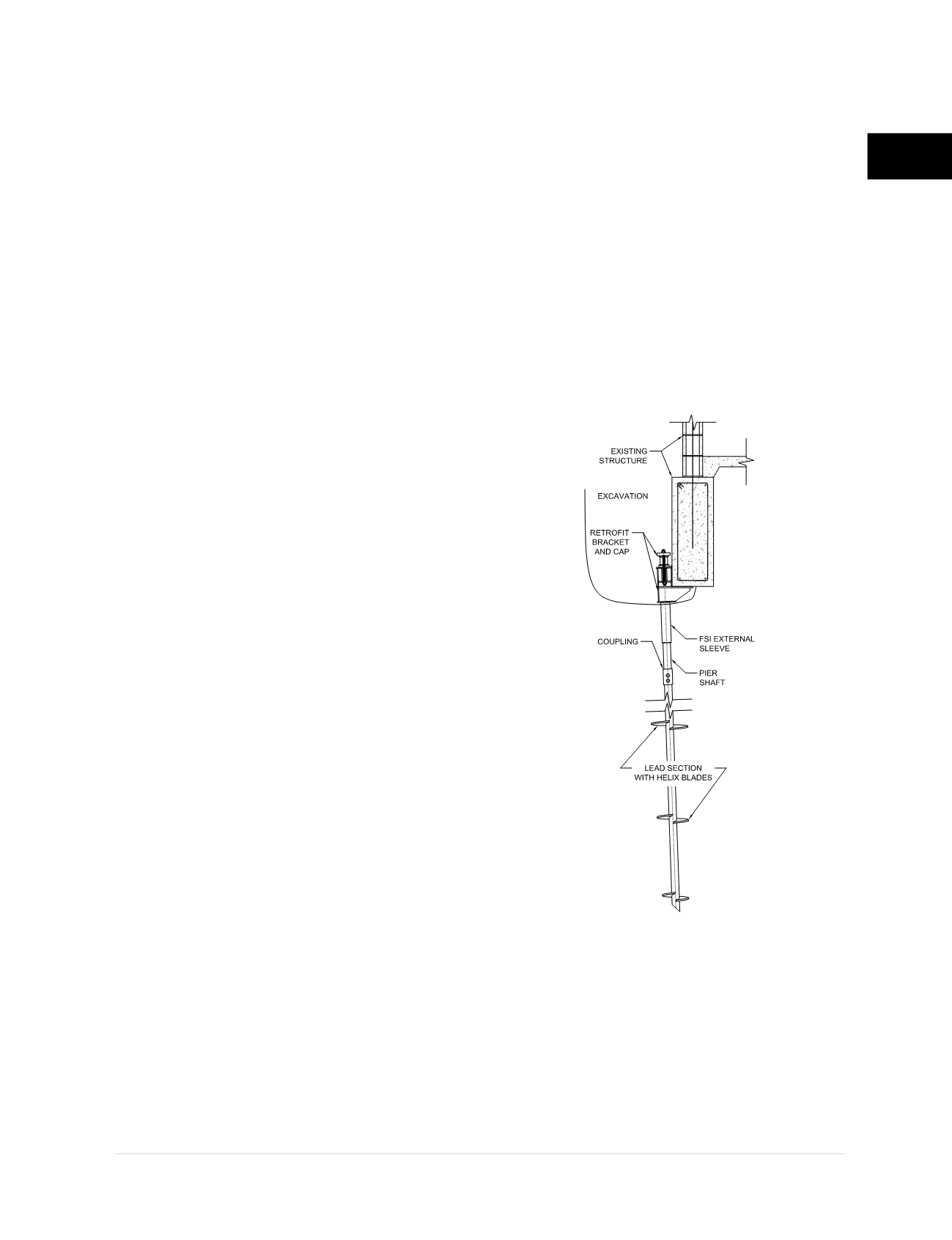
© 2014 Foundation Supportworks
®
,
Inc.
All Rights Reserved
p 21
Chapter 2
Helical Foundation Systems
CHAPTER 2
HELICAL FOUNDATION SYSTEMS
2.6.2 New Construction
vs. Retrofit
New construction helical piles are generally
designed to be concentrically loaded; i.e.,
the load is transferred axially down the pile
shaft without inducing bending. These piles
are commonly installed longitudinally along a
grade beam and directly below the wall load, or
multiple piles may be incorporated into a rigid
pile cap to support and balance a column load.
New construction piles that are concentrically
loaded will behave purely as columns and will be
capable of supporting loads up to the maximum
allowable mechanical capacity per AISC design
methods. The maximum allowable mechanical
capacity should consider the bracket capacity,
the shaft and coupling capacity, and the helix
plate capacity. The connection to the structure
must also be designed appropriately with proper
pile head embedment in the concrete, concrete
strength, reinforcing steel, etc. Consideration
of the maximum allowable mechanical capacity
assumes that the soil is also capable of
supporting the load and that the shaft is laterally
supported or braced along its entire length. In
practice, the maximum allowable mechanical
capacity of the pile is seldom achieved as the
pile capacity is typically limited by soil strength.
Helical piles used in retrofit applications utilize
side-load brackets that introduce eccentricity to
the system. The pile shaft is not located directly
under the footing or structural load. Therefore,
retrofit piering systems are eccentrically loaded
and must be designed to resist the bending
forces generated by this loading condition
(Figure 2.6.2.a)
.
Most helical piles, especially in retrofit
applications, have outer dimensions of 3.5
inches or less. These sections are therefore very
sensitive to the bending moments introduced
by this eccentricity, thereby reducing the
capacity of the pier to carry axial load. The
retrofit pier does not act as a pure column as
in a new construction application, but rather
as a beam-column that must resist both axial
load and bending. Herein lies the problem. The
pier shaft has quantifiable axial and bending
capacities, and independent of the other, may be
significant. However, when both of these forces
are applied concurrently to the same section,
both the allowable compressive capacity and
allowable bending capacity are reduced. In
fact, according to AISC design methods, the
allowable compressive capacity may be reduced
by one-half or more for certain pile sections
when applying a bending moment generated by
an eccentricity of only two inches, which is less
than what would be considered typical for most
retrofit piering systems.
Foundation Supportworks addresses the issue
of retrofit helical pier eccentricities either of two
ways. The first is to increase the stiffness of the
pier system and then allow more of the resulting
bending forces to be transferred through the
pier system itself. This is accomplished by
incorporating an external sleeve to resist the
Figure 2.6.2.a
Schematic of retrofit helical pier installation


